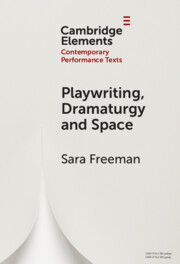Element contents
Playwriting, Dramaturgy and Space
Published online by Cambridge University Press: 19 December 2023
Summary
- Type
- Element
- Information
- Online ISBN: 9781009370257Publisher: Cambridge University PressPrint publication: 18 January 2024



